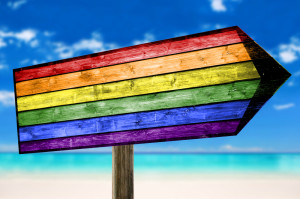LGBTQ Travel in China : CMI research and perspectives
Background Info about the Chinese LGBTQ Community
Community Marketing & Insights (CMI) estimates that, based on study and extrapolation, there are 65 million LGBTQ people living in mainland China, and the purchasing power of the community is around US $470 billion per year.
The Chinese Central Government’s attitude towards LGBTQ issues is “not encouraging, not discouraging, and not promoting.” There is no form of legal recognition of same-sex relationships, nor specific laws to protect LGBTQ people from discrimination. Adult homosexuality in mainland China was not legal until 1997, and it was considered to be a mental illness until 2001.
Chinese LGBTQs are facing discrimination from society. In a collectivist culture like China, being different is considered sick and abnormal. And the smaller the city is, the more hostile the social environment can be to LGBTQ people.
According to the data from CMI’s inaugural China LGBTQ Community Survey in 2014, 27% of respondents from Tier 3 or 4 cities were completely in closet; not out to anyone. And the number went down to 19% for respondents from Tier 1 cities. In fear of losing career advancement opportunities in fierce employment competition, only 25% of respondents who were from Tier 1 cities while working full-time came out to their boss or close colleagues, and only 16% who were working LGBTQs from Tier 3 or 4 cities did so.
Family pressure is another source of anxiety to the Chinese LGBTQ community. 81% of Chinese LGBTQs admitted that pressure from family is the biggest concern to them. There’s an old saying in China, “There are three forms of unfilial conduct, of which the worst is to have no descendants.” Thus, many LGBTQs, especially the older generation living in the time when homosexuality was not legal nor removed from the list of mental illness, were forced into heterosexual marriage to have children and live a “normal” life.
 However, just as the Chinese economy increased in rocket speed over the past 3 decades, LGBTQ movements also made tremendous progress. Slowly, parents have started to accept their LGBTQ sons and daughters. LGBTQs are coming out to the media to make their voice heard, and increase the visibility of the community. PFLAG China is the largest LGBTQ NGO in China with over 1,000 volunteers working at 40+ locations across the country.
However, just as the Chinese economy increased in rocket speed over the past 3 decades, LGBTQ movements also made tremendous progress. Slowly, parents have started to accept their LGBTQ sons and daughters. LGBTQs are coming out to the media to make their voice heard, and increase the visibility of the community. PFLAG China is the largest LGBTQ NGO in China with over 1,000 volunteers working at 40+ locations across the country.
The business community has started to recognize the spending power of the LGBTQ community as well. Blued, the largest same-sex dating app in China with 27 million registered users, received millions of dollars in series C and C+ funding at the end of 2016, making the value estimation of the company US $600 million. Some of the most popular companies in China are recognizing and supporting the LGBTQ community, too. Alibaba’s Taobao sponsored 7 same-sex couples to get married legally in the US in 2015, while other brands released rainbow-themed ads or logos voicing support to the LGBTQ community after the legalization of same-sex marriage in the USA.
There are some traits about Chinese LGBTQs who are active in the community:
- Young Age. In CMI’s research experience, about 90% of Chinese LGBTQs who are reachable through LGBTQ social apps, media and events were born after 1980. This is a period when China opened its doors to the world and progressive ideas started to flow in, while the criminalization and “illness” of homosexuality had minimum impact on them.
- Urban Core. Just as in many western countries, thecomparative economic advantage and diversity of big cities attractsyoung Chinese LGBTQs. In CMI’s Inaugural LGBTQ China Tourism & Hospitality Study, 72% of the respondents came from the 30 most affluent mainland Chinese cities.
- Male-skewed. Young Chinese gay and bisexual men mainly clustered on same sex dating apps while lesbian and bisexual women tend to scatter everywhere. And that’s why male same-sex dating apps like Blued could generate 20+ million users. Lesbian and bisexual women are also into LGBTQ events, local lesbian organizations, online groups, or general women’s organizations.
5 Key Takeaways About the China LGBTQ Outbound Travel Market
- Chinese LGBTQs will be the major source of LGBTQ travelers worldwide for the next several decades. First, young Chinese LGBTQs have started to explore the world. Over 1 in 4 Chinese LGBTQs have taken at least one leisure trip outside mainland China, according to CMI’s China LGBTQ Tourism & Hospitality Study. Second, dwelling in the most economically advanced areas gives Chinese LGBTQs the financialcapability to travel, and provides access to premium travel trends and information. Third, Chinese LGBTQs have an age advantage. Most active members are in their 20s and 30s, and their spending capability will only grow in the next three to four decades. Though it’s possible that some LGBTQs may go back to the closet and enter heterosexual marriage due to family pressure, most out LGBTQs are expected to maintain their status in the community as both the visibility and acceptability of LGBTQ people improves.
- Though the gay men’s market is more reachable, the odds of the lesbian market are good too. Based on data from CMI’s Inaugural China Tourism & Hospitality Study, 30% of lesbian and bisexual women have taken at least one leisure trip outside mainland China compared to 22% gay and bisexual men. In addition, women are more likely to identify as mid-price range traveler than men (39% vs. 20%); men are more likely to identify as a non-traveler and budget traveler. The results are not a surprise. According to the China National Tourism Administration, in the first half of 2016, the makeup of outbound travelers is 58% women and 42% of men.
- Chinese LGBTQ travelers should never be separated from the general Chinese millennial travelers. They are Chinese travelers first and LGBTQ travelers second. Their travel motivations and preferences are more in line with their Chinese non-LGBTQ peers than their LGBTQ peers in other countries.
- Mobile is the key in reaching the Chinese LGBTQ travelers.Large perentages of the respondents rated Wechat and Weibo as the top social media platforms they use, making these two the leaders among non-LGBTQ specific social media sites. (CMI’s China LGBTQ Community Survey). The leading same-sex dating apps, Blued, Zank, Rela (the L) and Lesdo combined, claim over 40 million total registered users. Besides the singular function of meeting/chatting with other LGBTQ people, these apps are engaging in a variety of aspects of Chinese LGBTQ life by producing video contents, organizing off-line events, selling LGBTQ related products, etc. According to CMI’s LGBTQ China Tourism & Hospitality Study, 85% gay and bisexual men and 92% lesbian and bisexual women used their mobile devices in trip planning and/or during trips.
- When selecting a vacation destinations outside China, LGBTQ-friendliness is important, but visa rules are of concern. When asked “How important are the following factors when choosing an international leisure travel destination?” 60% of respondents rated “Flexible Visa Rules” Very Important, 33% rated Moderate Important and only 7% rated it Not Important. Developed country destination embassies impose harsher standards scrutinizing Chinese singles for tourist visas. Since same-sex marriage is not legal in China, Chinese LGBTQs face a chance of a denied visa to popular LGBTQ destinations in North America and Europe. However, it’s an opportunity for destinations with visa rules that favor Chinese citizens. Thailand is a great example. With its longtime LGBTQ-friendly reputation, affordability and friendly visa rules, it has become one of the most popular LGBTQ destinations to Chinese LGBTQs.
Lu Xun
Director of Quantitative Research
Community Marketing, Inc.
584 Castro St. #834
San Francisco CA 94114 USA
tel 415 437-3800 ext 108











